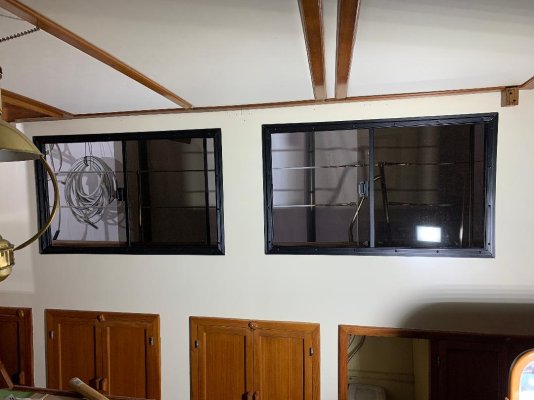One thing I've found that helps is to make up some 'guide screws'. I get a couple of extra long screw that match the holes in the frame/boat, cut the heads off with an angle grinder, and then use vice grips to put two of these into two holes in the frame on the boat, one on each side.
Then after I've applied the butyl tape to the window, I can place the window onto the 'guide screws' and slide it into place with perfect alignment, put some of the other screws in and then replace the guides with the proper screws. This eliminates the chance of the butyl getting pushed/pulled out of place when trying to reposition it for screw alignment, because it's already aligned at first contact.



 so I deleted that part (tho I have no affiliation other than happy customer.)
so I deleted that part (tho I have no affiliation other than happy customer.)